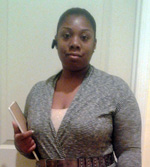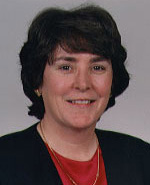by Monee Perkins and Peggy Coyne
In the September issue of the Reading Today Online TILE-SIG Feature, Monee Perkins and Peggy Coyne shared their thinking about Universal Design for Learning (UDL) and literacy in a New York City classroom. At that point Monee had just learned about the UDL Guidelines, and she was anticipating applying the principles of UDL to her instructional practices. Here are her reflections on UDL in her classroom.
 Monee Perkins
Monee Perkins
 Peggy Coyne
Peggy Coyne Using the UDL Guidelines as a framework for my instructional practices, I introduced two new tools and one instructional method, which I know have made a difference in my students’ performance. The 88 seventh grade students I teach range from below average to above average, but like many inner city students, they are not engaged with school. My greatest challenge for these students is engagement.
In the first segment of this article, I mentioned how excited I was to introduce Adobe Reader. I have not been disappointed. Students have used the annotation features to address complex text. For example, I introduced close reading of text with "Story of an Hour" by Kate Chopin. I first had the students skim the article for unfamiliar words and using context clues define those words. The students were able to use a synonym for those complex words and include it in the article when they read. In addition, the annotation tool provided students with another representation for text commenting, they found it to be very efficient because they were able to use another way listen to the story.
Another tool I have successfully introduced is Wall Wisher (which is now called Padlet). My students use this tool when I introduce a theme or writing prompt. Like Achieve 3000, I have encouraged writing with a poll and have allowed students to gather literary and informational resources to further their understanding of a topic. Wall Wisher allows my students an opportunity to practice responding to a prompt and to the opinions of others in a respectable manner.
Finally, I began using Socratic Seminars as a means to help students interact and engage with the text through questioning. You can read more about these text-based discussions from ReadWriteThink. My students read Chopin’s "The Story of an Hour" twice, once to get the gist and then a second time to develop their own questions. At this point, they have eliminated Level 1 and Level 2 questions and have moved right to developing Level 3 questions.
My colleagues have also noticed my students’ increased engagement. Recently, I invited the principal and social studies teachers to observe one of the Socratic Circles. I love my principal, but she usually points out how we can improve. The day she observed our seminar she stated, "This is what school is about and should look like!" She observed students who were 95% engaged in the text and thoughtful discussion. She watched students who were challenged taking charge of their discussion. Needless to say she was pleased.
When I think about my lessons, I always think about the UDL Guidelines: multiple means of representation, which ensure my students have many ways to access the text; multiple means of action and expression, which allow me to provide students with appropriate levels of challenge to sustain their motivation; and multiple means of engagement, which prompt me to consider how will I make their learning experiences authentic and meaningful. I am just at the beginning of my UDL journey with respect to changing my teaching practices. I look forward to moving ahead and adding new techniques through my newfound knowledge.
Monee Perkins is a 7th grade ELA teacher in the Bronx, NY.
Peggy Coyne is a Research Scientist at CAST, Inc.
This article is part of a series from the International Reading Association Technology in Literacy Education Special Interest Group (TILE-SIG).